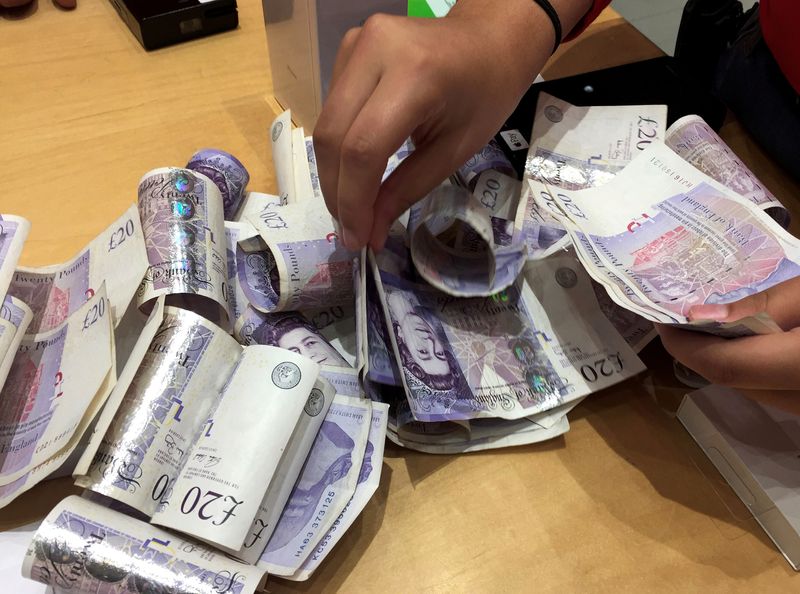 © Reuters. A shop assistant counts piles of British Pound Sterling banknotes at an Apple store in London, Britain November 18, 2017. REUTERS/Russell Boyce
© Reuters. A shop assistant counts piles of British Pound Sterling banknotes at an Apple store in London, Britain November 18, 2017. REUTERS/Russell Boyce
By Samuel Indyk
LONDON (Reuters) - Sterling's meandering performance against the dollar could get a jolt this week as Britain's finance minister faces pressure to cut taxes, but with the gilt turmoil of September 2022 still fresh in the mind, prudence may be the order of the day.
The pound has traded in a narrow $1.2501-$1.2825 range against the dollar since the middle of November, while volatility is close to its lowest since February 2020, just before the COVID-19 pandemic struck markets.
But Jeremy Hunt's Spring Budget on Wednesday might cause sterling to stir, as the ruling Conservative Party's hoped-for fiscal space that was meant to bring large tax cuts before a probable 2024 election might be less than previously thought.
Britain's economy fell into recession in the final quarter of 2023, while the market's repricing of Bank of England (BoE) rate cuts has seen borrowing rates move higher in recent weeks, limiting Hunt's fiscal headroom.
"We don't have as much of a positive outlook as we had at the end of the Autumn Statement," Hunt told the Sunday Telegraph.
And with former Prime Minister Liz Truss's disastrous mini-budget not yet out of the rear-view mirror, markets are acutely aware of what can happen when the government promises sweeping, unfunded tax cuts.
Britain's gilt market went into a tailspin 18 months ago, prompting intervention from the BoE, while the pound slumped to a record low against the dollar.
SCOPE FOR A SURPRISE?
Analysts are not expecting the same from Hunt, but admit that the scope for a surprise should not be ruled out.
"A moderately-sized tax relief package (i.e., one that does not trigger gilts turmoil) can probably give some support to GBP this week," said ING's Francesco Pesole, "but the spectrum of possibilities is admittedly quite wide."
That said, the likelihood of the budget being a game-changer for either the growth or the inflation outlook remains slim given the fiscal constraints.
Markets currently see the BoE starting to cut interest rates in August, with only 62 basis points (bps) of easing priced this year, implying two, maybe three, quarter-point cuts in 2024.
The Federal Reserve and the European Central Bank, meanwhile, are both seen delivering around 90 bps of easing this year, or at least three 25 bps rate cuts, possibly four.
Higher British interest rates - only the Fed and Reserve Bank of New Zealand have higher policy rates in the G10 - and expectations that they will stay at elevated levels for longer, should be a fruitful mix for sterling bulls.
And that's why sterling is the only major currency that has kept pace with the rampant dollar this year, where the economy has defied the Fed's aggressive tightening of the last two years and continued to grow at a robust pace.
The Fed's Chair Jerome Powell delivers his semi-annual testimony to Congress this week, the ECB announces its latest policy decision on Thursday and U.S. payrolls are due on Friday, meaning there is plenty that could shake sterling awake.

